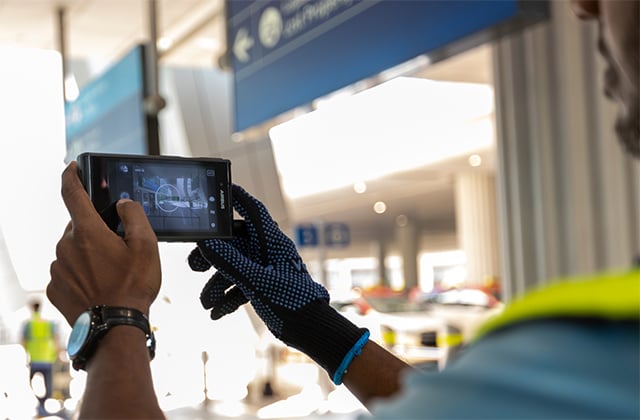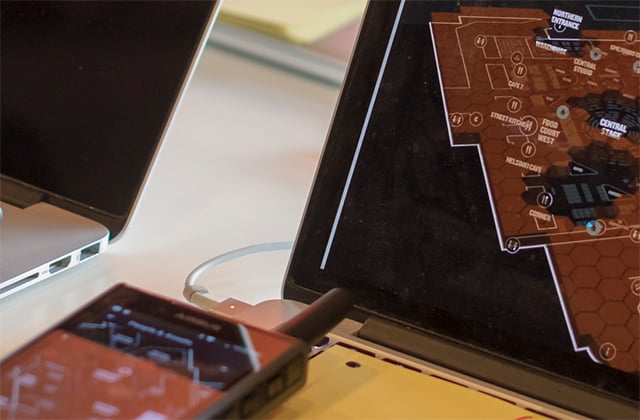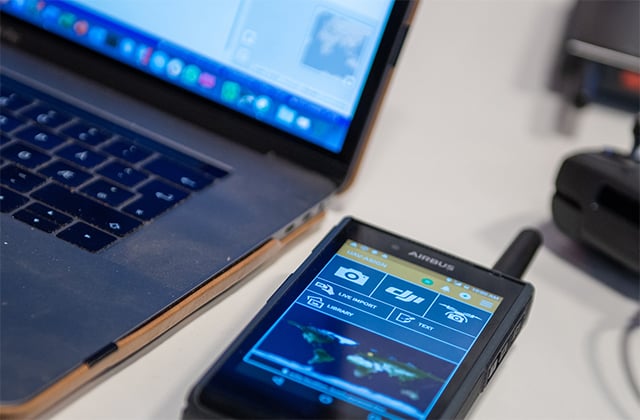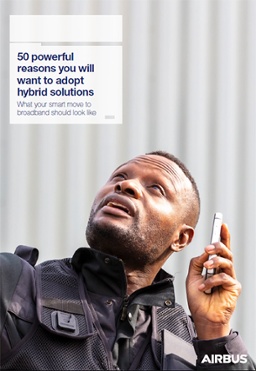Has your organization decided to use smart or hybrid devices? Great!
But before you jump into the buying phase, take some time and plan one thing: how to configure and manage those devices and their apps. To help you, here are 14 handy tips about device management.
You should plan how to manage smart devices and apps – before your people start using them. A good plan helps the process go smoothly.
Here are 14 tips for device management success:
1. Start with the “why”.
2. Make a plan.
3. Have the right policies.
4. Consider the security needed.
5. Don’t compromise on security - nor on usability.
6. Think ahead: think about scaling up.
7. Remember to check the new device models.
8. Make EMM invisible to users.
9. Don’t believe that your organization can be isolated.
10. Train and educate your users.
11. Remember user identity management.
12. Remember privacy policies.
13. Iron out the issues in a pilot/testing phase.
14. Don’t stop developing and improving.
This is the seventh in a series of blog posts on how to bring smartphones, hybrid devices, and apps into professional use. The posts cover topics that help organizations move from traditional radio communication to complementary broadband data solutions.
Today’s question is: How should organizations plan their professional smart device management before bringing devices and apps into use? Here are 14 tips to help you succeed:
1. Start with the “why”.
As well as smart and hybrid devices, many organizations know they probably also need an Enterprise Mobility Management (EMM) solution to manage them - but they don’t know exactly why.
To succeed, set clear goals, as otherwise, it will be hard to maintain your devices. Think why you need an EMM solution and what affects the security and the environment where it will run. For example, running devices in an isolated environment, you will have different needs than if you’re running them on the public Internet.
Above all, set clear objectives and a vision of how you will employ smart devices.

2. Make a plan.
Having a plan for managing smartphones, hybrid devices and apps will avoid substantial security risks.
For example, users may install applications on their devices that are not secure, allowing malware or malicious software to spread and threaten the organization’s infrastructure.
There must be a proper set of policies for the EMM solution and users must also know the rules about using their devices. There must also be some organization to continually develop the EMM.
Handpicked related content
Download white paper: How to manage smartphone-related security risks. You will learn how to guard against risks related to five areas: the device itself, data, applications, infrastructure, and people.
3. Have the right policies.
Every organization needs a documented IT security policy, to help protect the organization’s data and other valuable assets and guide employees on the proper behavior.
Many organizations either have one policy for all, or too many policies. One policy for all can result in inflexible rules that are hard to follow, while too many policies simply confuse people. Policies should be understandable to those required to follow them - they should not make their work harder, but neither should they compromise data security.
It cannot be stressed enough - policies are not everything. They can create a false sense of security and mean nothing if not enforced.
4. Consider the required level of security.
Getting the right EMM solution is vital to protect against data security and privacy breaches, but there are several available, each offering different levels of security.
Some organizations, like public safety, require more security measures than others. The level of need should be properly analyzed beforehand. For example, can you disable enough features for a high-security organization so the security policies are fulfilled? Without considering this, you may get a solution with less security and it could be a problem to switch to another afterwards.
Handpicked related content
Join an interesting webinar on 23 Jun 2021 and learn 9 easy ways to improve your communication security. In this webinar, top experts discuss topics such as access rights, user rights, GDPR, and data classification, and how these topics relate to communication security.
5. Don’t compromise on security - nor on usability.
When bringing smart and hybrid devices into professional use, many organizations compromise on either security or usability. Having too much freedom for users could damage security, while, if security is too strict, it will affect the work of users, who will then find ways around it.
So, there needs to be a balance between security and usability. An organization needs to find the middle ground between centralized security and empowering more people to find their own way of working.
Policy makers should discuss requirements with users but not take on board everything they say. Create and agree on this “mobile corporate strategy” that will find the balance between usability and security. And with the right EMM solution, you won’t have to compromise on either.
6. Think ahead: think about scaling up.
If your organization is bringing only a couple of smartphones and/or hybrid devices into professional use, it seems straightforward to configure and manage them manually one by one. But if the number of devices grows to 100, 50, or even just 10, it becomes much more complicated or even impossible to do this manually.
Many organizations do not think about scaling up when they start and only realize later how complex it is to maintain devices. Adopting the right EMM solution from the start will help set the baseline for growth.

7. Remember to check the new device models.
Your organization may already have some smart and hybrid devices in use. Later, you may want additional devices, but discover that these models are not supported by the EMM solution you’ve adopted.
This means that you need to switch your EMM solution to another, which can make things complicated for users and your organization, plus it will cost more money. To avoid this, the device need, device models and the strategy for growth should all be planned beforehand.
But it’s no longer just about smart and hybrid devices and apps - it’s also about the Internet of Things (IoT), TVs and smart screens. Users expect not have to have several systems to manage different types of devices and that at one point they will be merged. This means buying one end-to-end solution to address different types of devices.
This trend is called unified enterprise management or unified end point management and is the next step after EMM.

8. Make EMM invisible to users.
The days when the most sensitive information on your users’ phones was contact details are long gone. Therefore, your organization’s smart and hybrid devices should be kept updated – to patch any holes in security that could give mobile malware and other security threats easy access to the device.
But there are many different ways to manage your organization’s smart and hybrid devices – from a very restricted environment in which everything is managed automatically for your users, to a BYOD (Bring Your Own Device) policy, which requires users to perform manual updates themselves, but also gives them more freedom.
Even in a more restricted environment, many organizations “outsource” this task to end users, but this can increase complexity, potentially adding huge cost.
EMM should be invisible for users, only being accessible by administrators. Users generally don’t want to waste time on updating their devices.
9. Don’t believe your organization can be isolated.
Many organizations believe that using an EMM solution can isolate them from big players like Google and Apple.
But if you want to use the latest Android devices, for example, then you are also dealing with Google accounts and Google capabilities and cannot be isolated from them, unless you’re using some special devices. Organizations need to take account of the growing dependencies with these big players.
10. Train and educate your users.
Security measures need to be in place to prevent data security and privacy breaches. But it’s not just about the technology. If users don’t understand the limitations of those security measures, they will more likely bypass the rules and try to find some other ways to do their job.
Insufficient training of users can be the biggest block to successful implementation. For example, if a smart device is stolen, the device can be locked easily through the EMM solution, but the user must know what to do once the device is stolen. The importance of training users cannot be stressed enough.

11. Remember user identity management.
Successful management of your smartphones, hybrid devices and apps also involves user identity management. Should this be the same, or completely separate, from how you manage your devices? Or should it be the same as managing subscribers in your network? Failing to do this could lead to serious problems.
Users also expect a Single Sign-On (SSO), enabling them to access a suite of applications with a single login - irrespective of the platform, or technology used.
12. Remember privacy policies.
When it comes to location tracking of people or recording of communications, for example, organizations need to take relevant legislation into consideration. In the EU, according to the GDPR (General Data Protection Regulation), location data and audio/video recordings can qualify as personal data if it relates to an identifiable individual.
This means there are many obligations on organizations governing how this data should be stored and processed. First of all, organizations must have consent of the people they collect personal data from and people also have the right to access/obtain, correct and erase this information.
Handpicked related content
Watch this webinar recording: How can one avoid the top 9 PTT app mistakes that could threaten conversation security? You will learn how GDPR, data privacy and data residency laws apply to smart PTT services.
It is also possible to track all employees’ location data without their consent, but in that case, you must ensure that employees understand how you handle their data, and how you ensure its privacy and security.
13. Run a pilot or tests before deployment.
Another issue is to evaluate and check that apps meet your security policies and rules and possess no dangerous features. For example, recording audio/video can be a big security risk. If this is poorly managed, then you’re recording everything and some criminal can access that information.
But what is the best way forward? An overall plan is a good idea but these run the risk of slowing down progress. A better way could be to start with smaller steps – a pilot.
One good approach is to select 10 apps, start experimenting with a pilot user group and then base your deployment plan on the lessons learnt. Piloting is crucial as it’s important to test apps adequately before deploying them.
There can be many options for deployment, and no single model that fits all. But whatever the approach, you still need to have vision and understand your current situation and then take smaller steps towards your destination.
14. Don’t stop developing and improving.
While the EMM market is very mature, many organizations think that once they get an EMM solution in place they can just forget it. But there will always be changes in the market that you need to support and organizations need to understand that this is continuous work, which requires resources.
Continuous improvement is also very relevant. Even for smart devices, which is quite a mature market already, new devices, accessories, and IoT systems are constantly being launched and you need to be able to maintain them also. Doing this is a big challenge for organizations and that’s before we consider software updates and the applications running on those devices.

Today’s question was: How should organizations plan their professional smart device management before bringing devices and apps into use?
For most organizations today, the introduction of smart devices and apps means a move to a hybrid broadband-narrowband environment. They aren’t simply replacing all traditional radios with smart devices. This is a low-risk choice.
If you aren’t convinced about using digital or even analogue radios and LTE/4G/5G devices together during a hybrid phase, take a look at this eBook! It gives 50 reasons you will want to adopt hybrid solutions:
To summarize -
This was the seventh in a series of blog posts on how to bring smartphones, hybrid devices, and apps into professional use. The posts cover topics that help organizations move from traditional radio communication to complementary broadband data solutions.
The first six blog posts in the series tackled the questions:
- Manage your smartphones, hybrid devices and apps – professionally
- How to use TETRA and smartphones in a hybrid way
- Battery life: What to look for in your duty smartphone
- 15 things your boss expects you to know about RFID, NFC and IoT
- Why professional smartphones need secure, special gadgets
- How to avoid the 7 biggest location tracking mistakes
When you have mission-critical broadband and can adopt smart devices for your critical operations, it is important to learn “The first things you need to know when your organization wants to adopt mission-critical smartphones and apps”.
And if you’re keen to know how to get the best of professional radio and combine it with all the advantages of modern smartphone apps, read this blog post: This is what professionals really want to know about hybrid devices.
Editor's note --
This blog post was first published in April 2021 and it has since been updated with links to relevant information that was published later.





